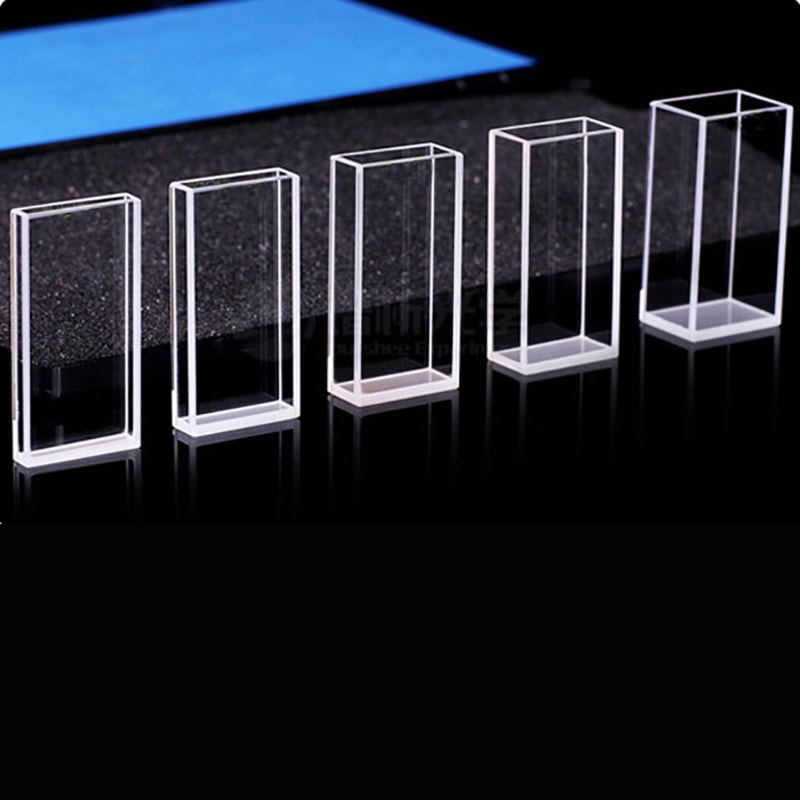The spectrotometry method, which exposes the secrets behind light transmittance and absorption across particular wavelengths, is a crucial method for scientific discovery. At its heart lies the cuvette, which is a small but essential vessel that stores samples to be analysed. The cuvette is a small container that may seem insignificant, but its structure along with the length of the cuvette’s path as well as the material it is made of, are crucial to obtaining accurate details on concentration and purity. Explore this fascinating realm of cuvettes and their dimensions. They influence the outcome of all experiments.

Image credit: cuvet.co
Power of Cuvette Path length
Imagine a light beam passing through a fluid sample. What happens is heavily dependent on the length of the cuvette, or the distance over which light travels. A standard 1cm path length cuvette is typically the go-to for many labs, striking a balance between sensitivity and practicality. Why is this important? The longer the length of the light path, the greater the amount of light that is taken in. So, the signal will be amplified for sample that is diluted. In the case of concentrated solutions, such as protein or nucleic acids, a short pathway length could change the rules. This technique reduces the amount of dilution necessary, saving precious samples and cutting down on preparation times. What’s the lesson to be learned? Making sure that the path length is in line with samples’ requirements is a fine art that boosts reliability.
Cuvette Dimensions and Size More than meets the Eye
Cuvette size isn’t just about how much liquid fits inside it’s about how the vessel interacts with the spectrophotometer. They are available in a variety of volumes and shapes to meet specific needs. Semi-micro cuvettes, for example due to their smaller size and thicker wall thicknesses are specifically designed to hold small amounts of samples. Imagine a couple of nanoliters or an uncommon biological extraction. Thicker walls lessen the internal space, allowing light to pass through a condensed sample, without losing one drop. Compare that to the standard cuvette, and it’s a stark contrast with fewer steps for pipetting and less chance of error and results that stand up under scrutiny. It’s an innovative tweak that makes it clear that size isn’t just an number it’s strategy.
The 1cm Path Length Cuvette: A Lab Favorite
Why is the cuvette with one centimeter of path length being used in a lot of research? It is ideal for biological tests where samples are not plentiful and milliliters are a lot. This design is a classic and provides reliable readings of absorbance without overloading the detector. It is ideal for all kinds of tests, including DNA purity tests to enzyme tests. It’s not the one that can be used for all. Change it out for another cuvette that has different length of path or geometry like one meant for research on emissions and the data can skew widely. It is important to choose the appropriate instrument, not one you are comfortable with. A cuvette that is not matched to the right one is like a mis-tuned instrument close, but not quite perfect.
Materials Matters: More Than Size and Path
Cuvette dimensions are only half of the tale. The material selection is the most important part. Quartz and glass cuvettes are known for their exceptional light transmission rates. They’re durable and can be reused. This makes them ideal for spectroscopy. On the other hand plastic cuvettes provide affordability and convenience to the table. There’s no cleaning, no cross-contamination. Just take them out and throw away. If you’re looking for aqueous solutions or fast DNA and RNA tests they’re hard to beat. The price? Low accuracy at certain wavelengths. Quartz is the most preferred material for purists, whereas plastic is the material of choice for those who are sensible.
Accuracy in Practice
The versatility of cuvettes is the reason they are attractive. With spacers, shorter paths can be used to manage concentration samples. The larger vessels are better suited for bulkier volumes. Any choice in length, size, material will ripple through the lab making clear the outcomes. Think of a lab analysing the amount of protein. A semimicro cuvette offers an easier path that will eliminate the need to dilute and provides reliable results faster. If you compare it to the unwise cuvette swap in mid-experiment and the results are distorted, it’s no wonder. This is a great reminder that even the smallest things can have a significant impact on the spectrophotometry.
Cuvettes aren’t huge, but their impact is immense. Cuvettes are available in a wide range of sizes including the cuvette that has one centimeter length and custom-designed. They are able to bridge the gap between data and insight. A cuvette that is right for you can transform a great measurement, whether you’re looking for concentration or purity or both, into an excellent measurement.



